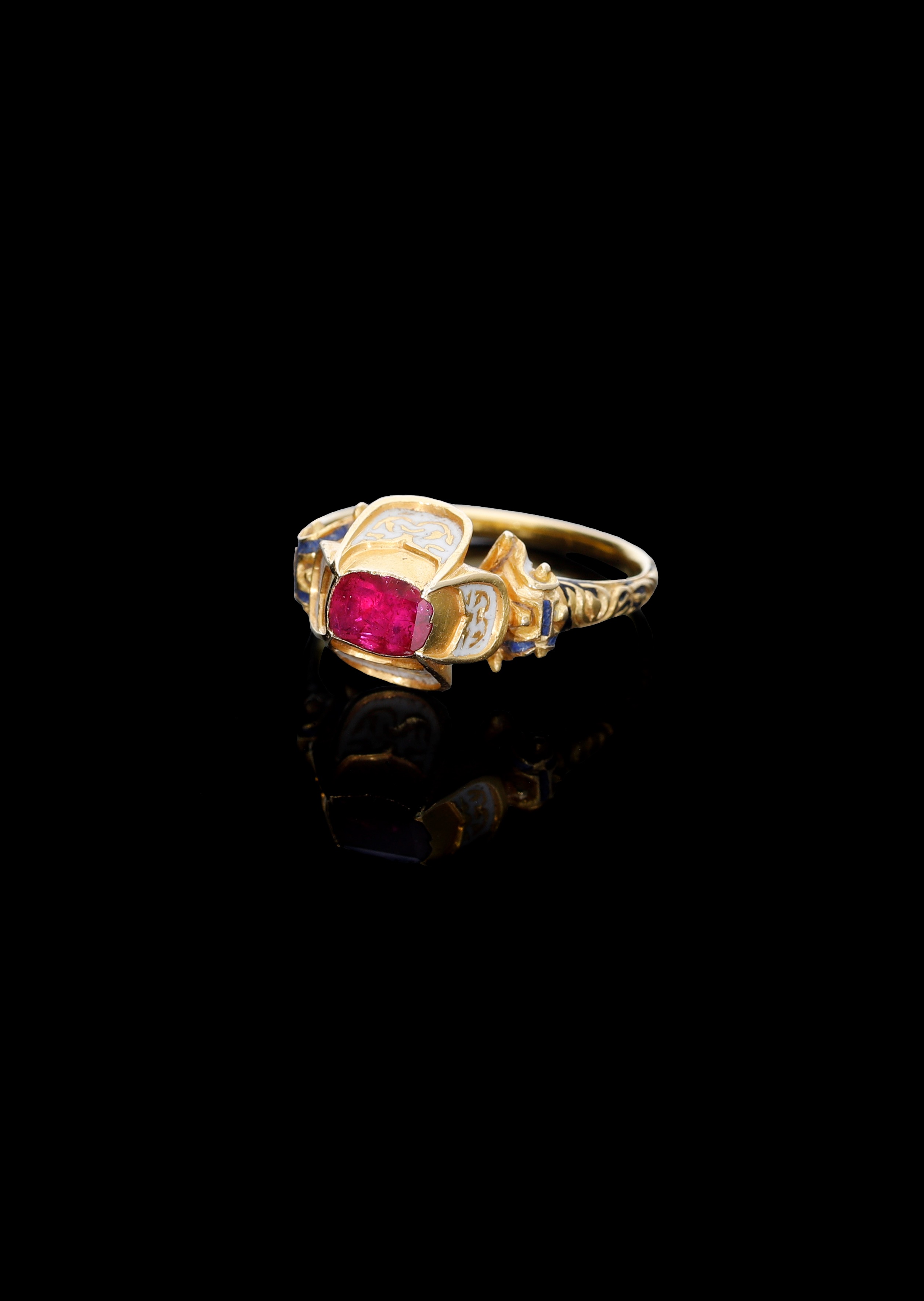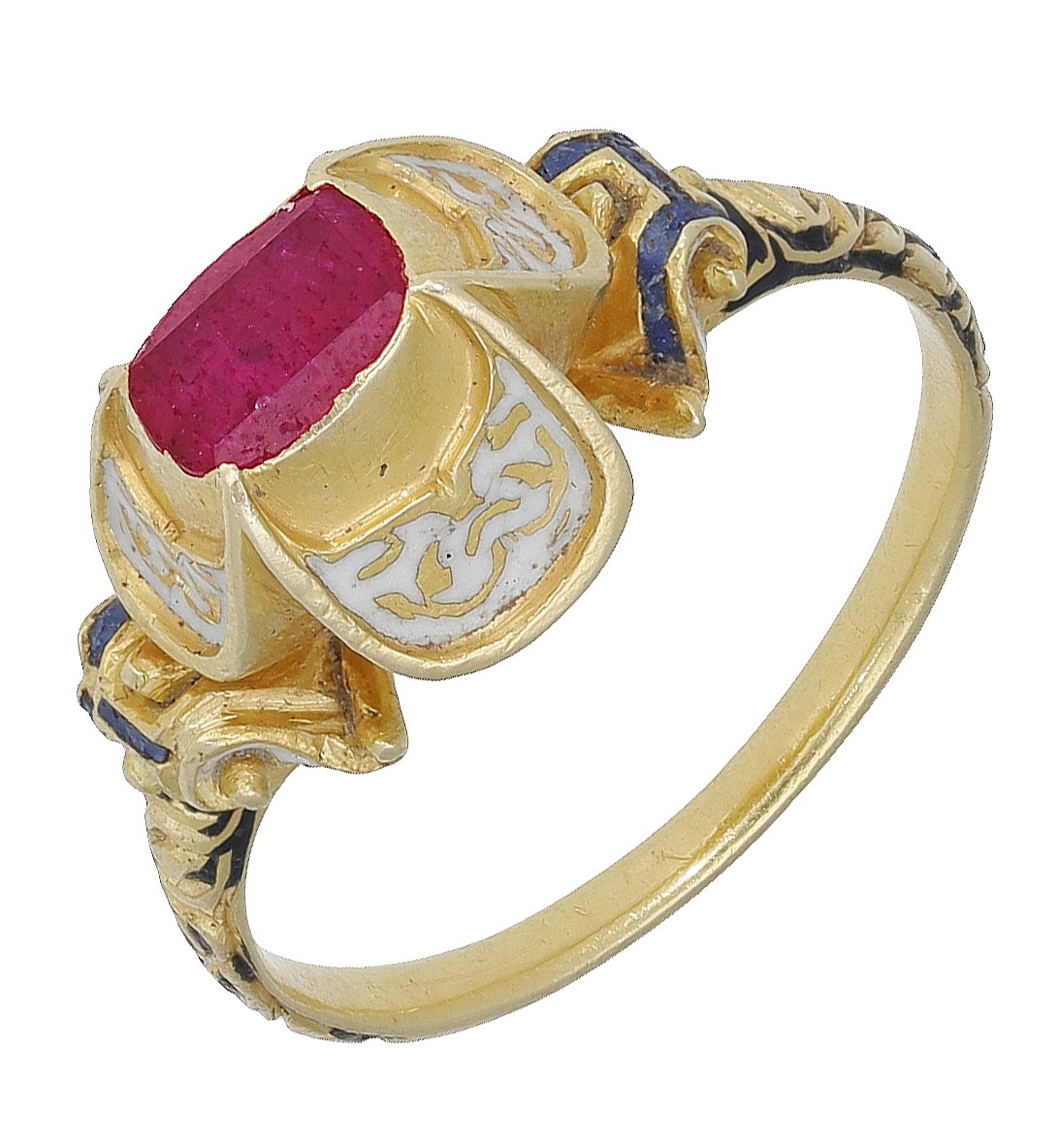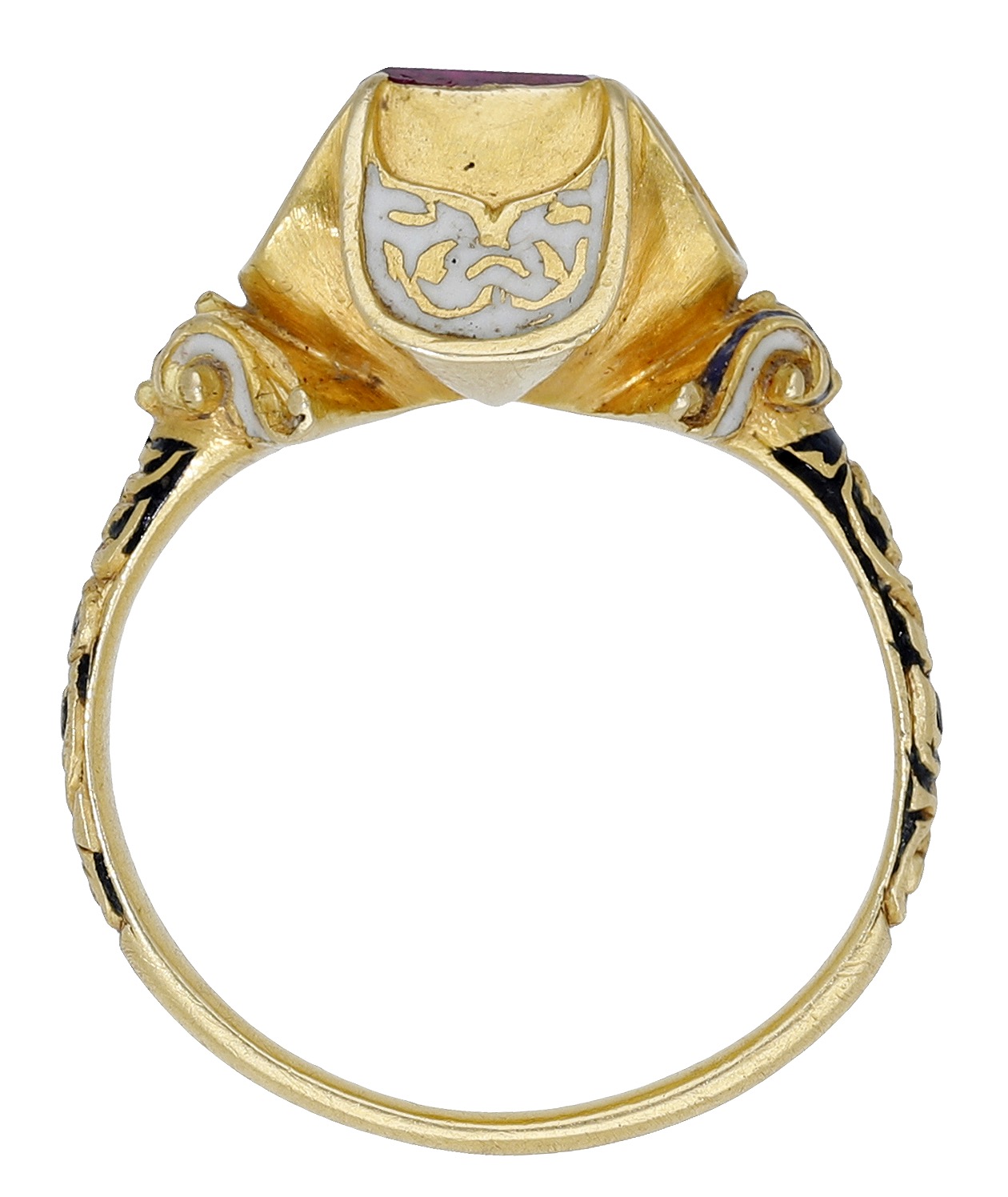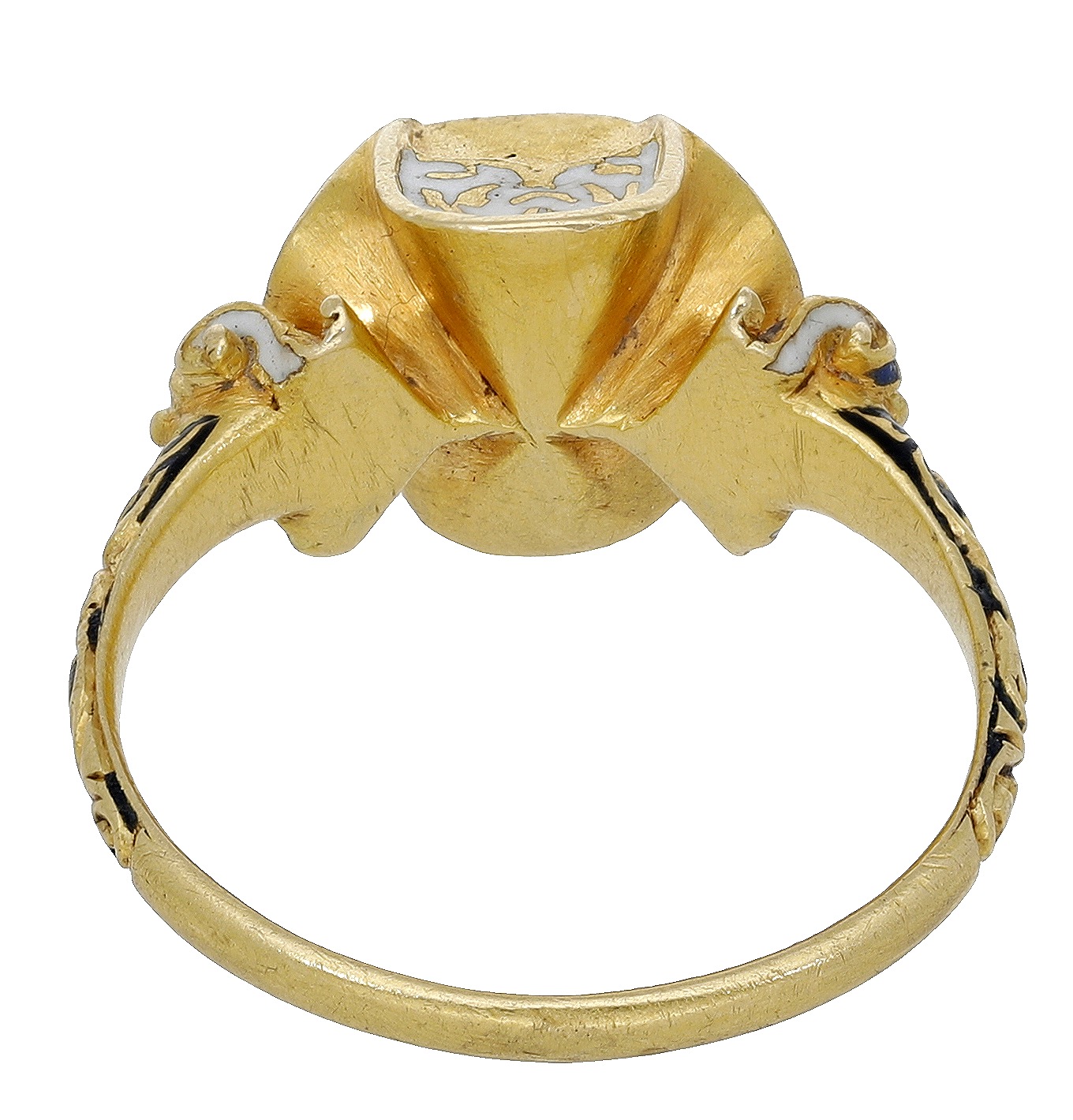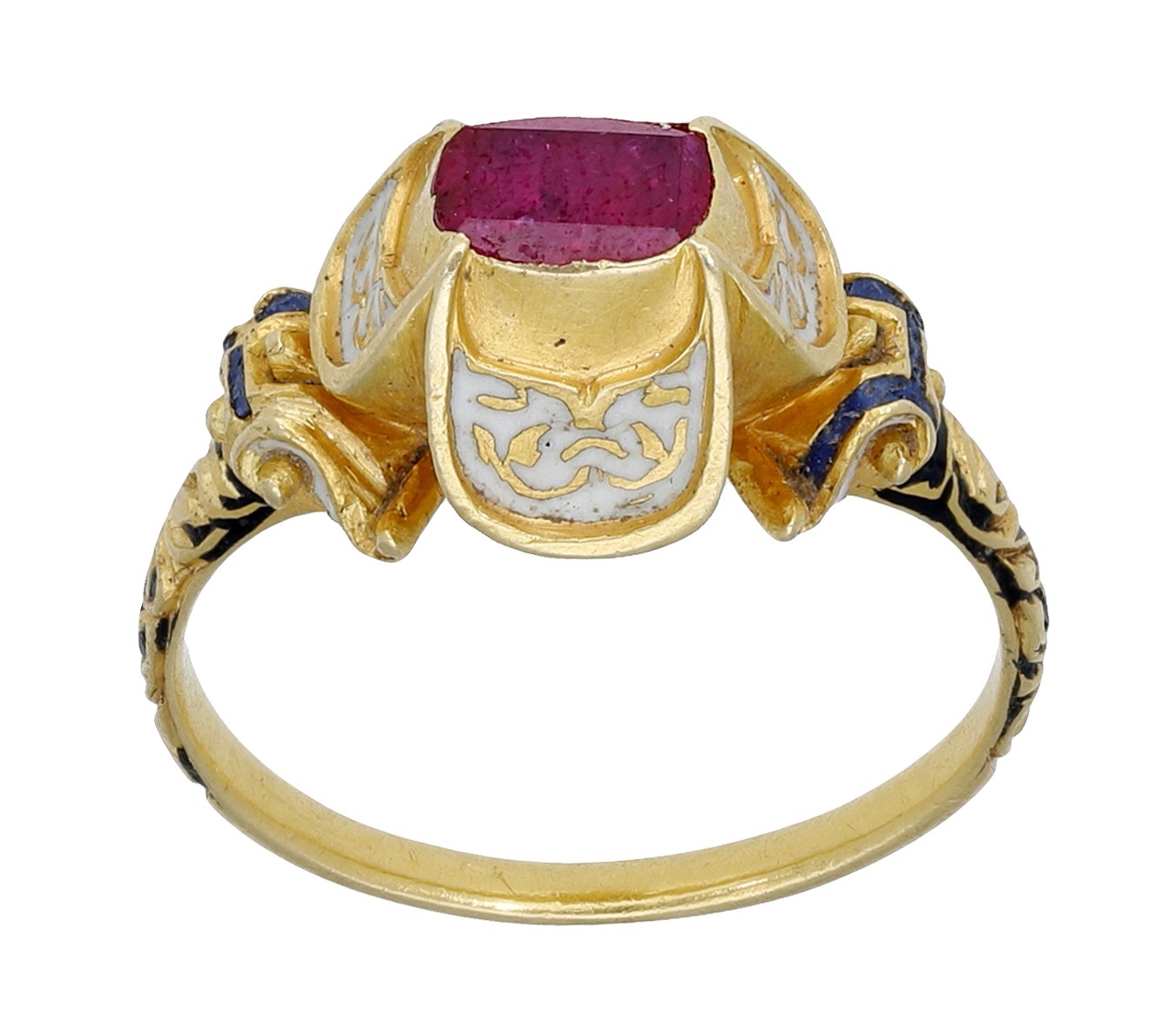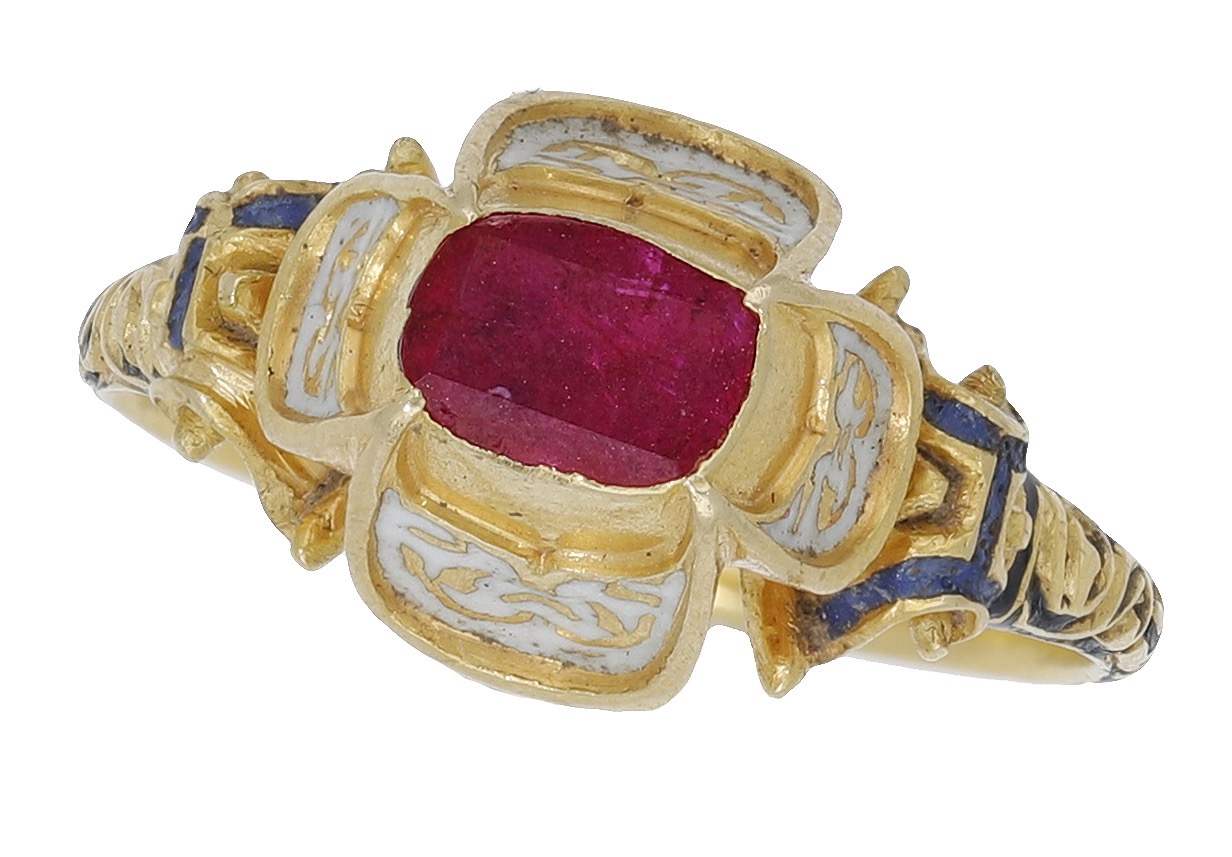94
A rare Elizabethan ruby and enamel ring, circa 1560-1580, the rectangular table-cut ruby...
---
Provenance: From a Private Collection.
In the Middle Ages, gem-set rings took a variety of simple forms, the focus being on the symbolic power of the gemstone therein, mounted in its natural (polished but unfaceted) cabochon form. In contrast Renaissance period rings, such as this example, are elaborate, set with faceted gems, and combining, as explained by the French goldsmith, Pierre Woeiriot in his Liver d’anneaux d’orfevrerie (1561) “the precision of the sculptor, with the taste of the painter”.
While the cusped collet setting continues from the Medieval period, by the 16th century these cusps become divided in two, with the lower scallop decorated in enamel. By the mid 16th century the use of polychrome enamel begins to appear on gem-set rings, and the fashion moved to display diamonds and coloured stones within more architecturally significant bezels, supported between sculpted volute shoulders.
In the last two decades of the 16th century, the single gem-set ring with box bezel and quatrefoil sides, fell out of fashion. The setting ceded importance to the gemstones themselves, with the stone-setter eclipsing the goldsmith; this resulted in a simplification of design, loss of sculptural elements and enamel relegated to the very edges and back of the settings (and usually black and white).
According to the famed Italian Renaissance goldsmith Benvenuto Cellini (1500-1571) “the ruby was valued as the most expensive stone, twice as expensive as the emerald, eight times as expensive as the diamond and eighty times as expensive as the sapphire” - quoted in Scarisbrick, D., Rings: Jewelry of Power, Love and Loyalty, 1993.
Despite their abundance in contemporary portraiture, surviving Renaissance rings, particularly examples in such fine condition as the example offered here for sale, are exceedingly rare. The fine ruby and beautiful enamel work would indicate an original owner of high status, probably a member of the Royal Court.
Condition Report
According to a PMI test on the XR analyzer, the gold is testing as 19.85 carat.
Chemical elements showing as:
Au 82.73
Ag 10.12
Cu 7.15
B 0.061
---
Provenance: From a Private Collection.
In the Middle Ages, gem-set rings took a variety of simple forms, the focus being on the symbolic power of the gemstone therein, mounted in its natural (polished but unfaceted) cabochon form. In contrast Renaissance period rings, such as this example, are elaborate, set with faceted gems, and combining, as explained by the French goldsmith, Pierre Woeiriot in his Liver d’anneaux d’orfevrerie (1561) “the precision of the sculptor, with the taste of the painter”.
While the cusped collet setting continues from the Medieval period, by the 16th century these cusps become divided in two, with the lower scallop decorated in enamel. By the mid 16th century the use of polychrome enamel begins to appear on gem-set rings, and the fashion moved to display diamonds and coloured stones within more architecturally significant bezels, supported between sculpted volute shoulders.
In the last two decades of the 16th century, the single gem-set ring with box bezel and quatrefoil sides, fell out of fashion. The setting ceded importance to the gemstones themselves, with the stone-setter eclipsing the goldsmith; this resulted in a simplification of design, loss of sculptural elements and enamel relegated to the very edges and back of the settings (and usually black and white).
According to the famed Italian Renaissance goldsmith Benvenuto Cellini (1500-1571) “the ruby was valued as the most expensive stone, twice as expensive as the emerald, eight times as expensive as the diamond and eighty times as expensive as the sapphire” - quoted in Scarisbrick, D., Rings: Jewelry of Power, Love and Loyalty, 1993.
Despite their abundance in contemporary portraiture, surviving Renaissance rings, particularly examples in such fine condition as the example offered here for sale, are exceedingly rare. The fine ruby and beautiful enamel work would indicate an original owner of high status, probably a member of the Royal Court.
Condition Report
According to a PMI test on the XR analyzer, the gold is testing as 19.85 carat.
Chemical elements showing as:
Au 82.73
Ag 10.12
Cu 7.15
B 0.061
Jewellery, Silver & Objects of Vertu
Sale Date(s)
Venue Address
General delivery information available from the auctioneer
If you are successful in purchasing lot/s being auctioned by us and opt for the item/s to be sent to you, we will use the following methods of shipment:
Within the UK
If you live within the UK, items will be despatched using Royal Mail Special Delivery. This service provides parcel tracking (via the Royal Mail website) and next weekday delivery (betwen 9am and 1pm). Items delivered within the UK are covered by our insurance company. Heavy and bulky lots will be sent by courier, in discussion with the client.
Outside of the UK
If the item/s being sent are worth under £1000 in total they are sent using Royal Mail’s Signed For International service. This ensures the item must be signed for when it is delivered.
If the item/s being sent are valued at over £1000 in total they will be sent using FedEx. This service allows next day delivery to customers in many parts of the US and parcels are fully trackable using the FedEx website.
Shipping Exceptions
Certain lots such as those containing glass or sharp implements, etc., may not be suitable for in-house shipping within or outside of the UK. Please contact Noonans with any queries.
Important Information
Auctioneer's Buyers Premium: 24% (+VAT)
There is an additional charge of 4.95% (+VAT/sales tax)
















